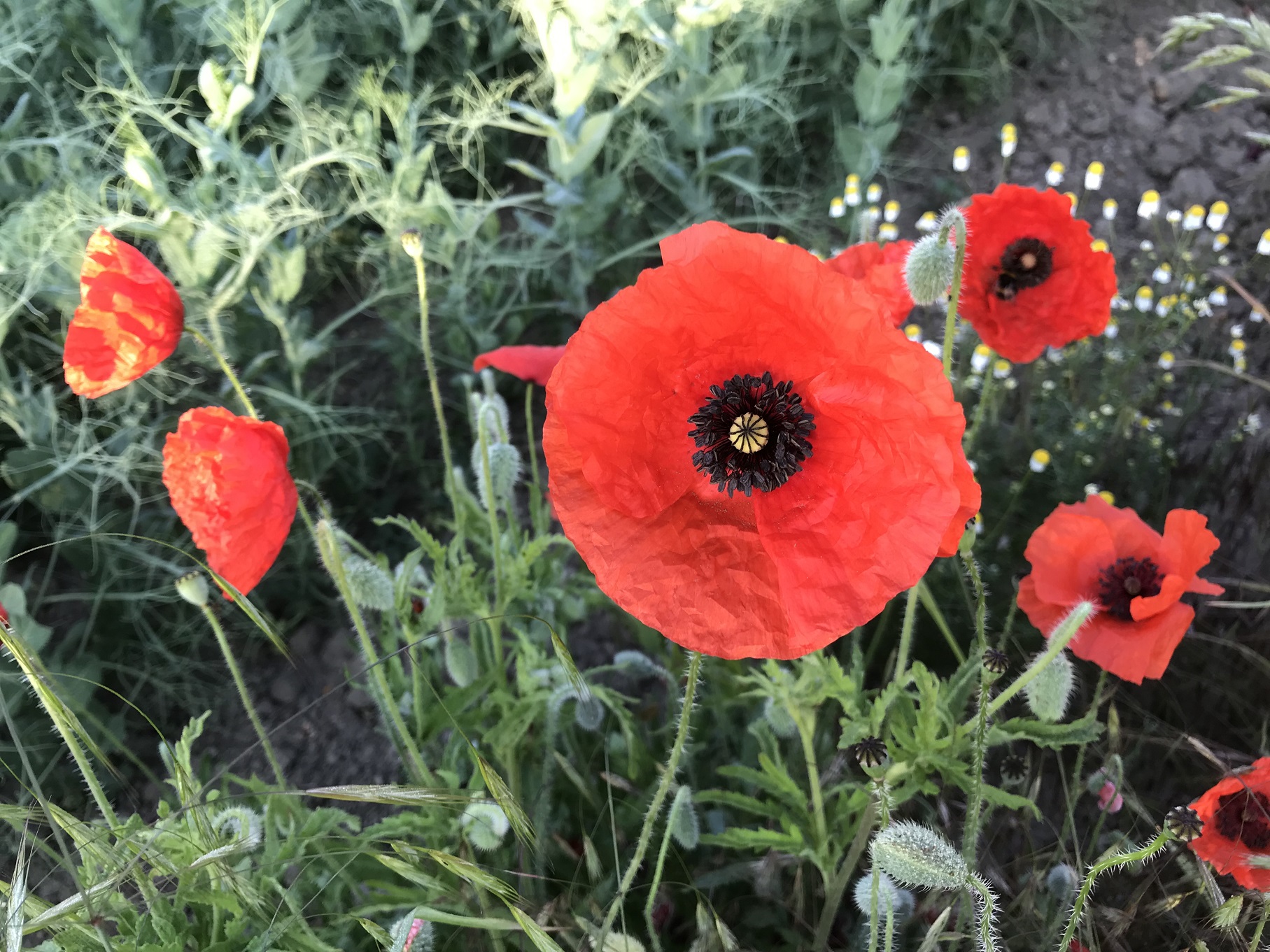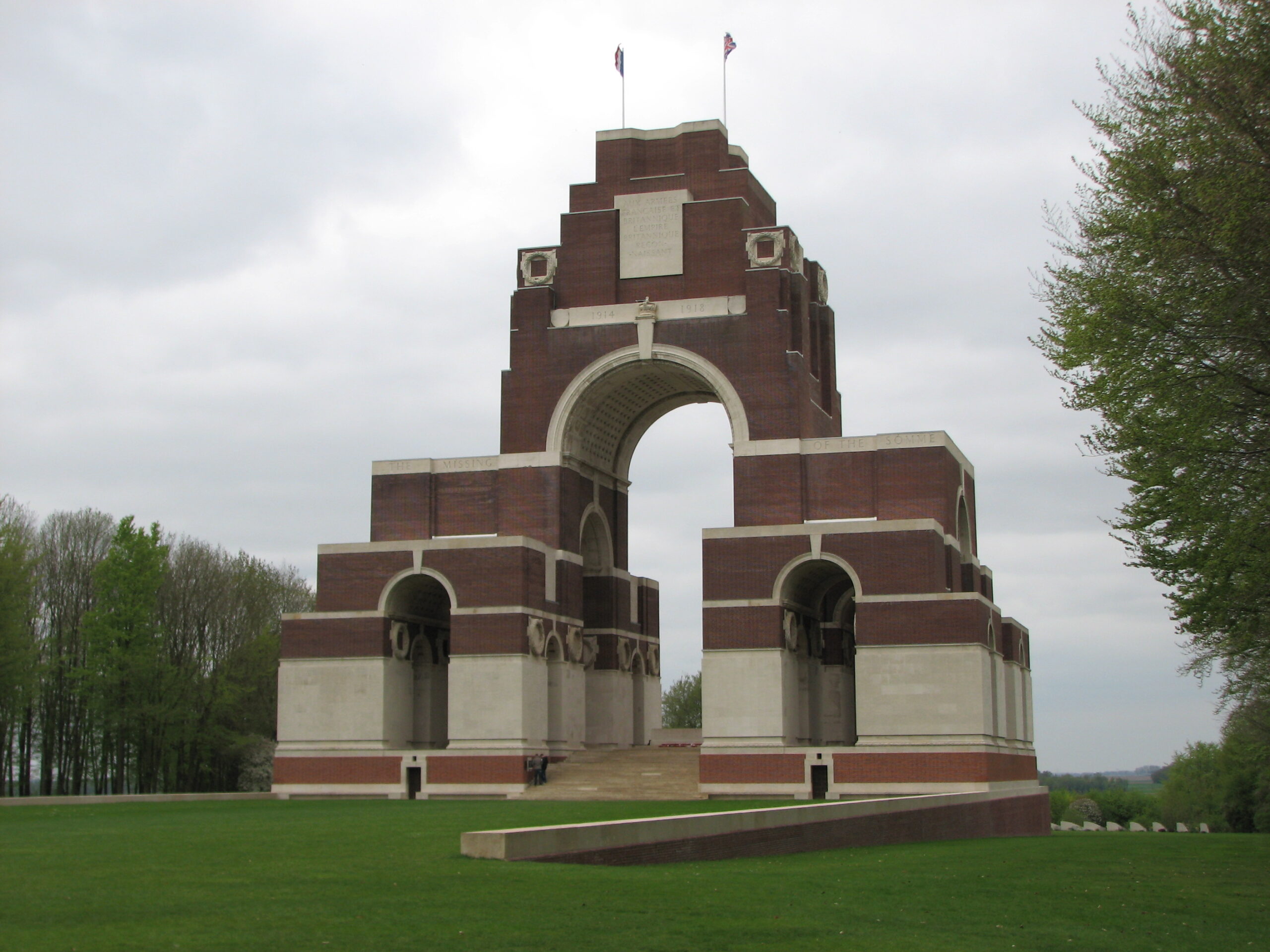Robert Dale (1897 - 1916)
Robert worked as a Farm Labourer, before joining the Army in late 1915. He was killed in the Battle of the Somme the following year, less than a week after “going into the line” for the very first time.
- 32
- Died in the Great War
- 51.976533, 1.035082
Details
| Name: | Robert Charles Dale |
| Service: | British Army |
| Unit: | 4th Battalion, Suffolk Regiment |
| Regimental Number: | 3857 |
| Rank: | Private |
| Date of Death: | 29th August 1916 |
| Age: | 19 |
| Commemorated: | Face A of Pier 2 of the Thiepval Memorial, near Albert, France |
Family Background and Early Life
Robert Dale was born in East Bergholt on 29th January 1897, one of at least 7 children born to Charles and Ellen Dale. 1 One of Robert’s elder brothers Daniel, served throughout in the Royal Field Artillery. For his service during the War, Daniel was awarded the Military Medal in 1919.
At the time of Robert’s birth, Charles – who was originally from East Bergholt – was employed as a Farm Labourer. He had previously been a Maltster for a short time, and later on would be employed as Shepherd and a Miller’s Labourer. Charles married Ellen Farthing from Lindsey, near Hadleigh, in the summer of 1886, and together they would have 11 children, although 3 died in infancy.
When Robert was a toddler the family moved to Brantham, where they lived at Warren Cottage.
Robert started his schooling in Brantham, but when the family moved back to East Bergholt (where they lived on Spring Lane) in 1903, he then attended the school at Burnt Oak. He left the School a few days before his fourteenth birthday and was employed as a Farm Labourer. At some point between April 1911 and July 1914 the Dale family moved again, this time to White Horse Road.
Robert’s Service Record was destroyed by German bombing during the Blitz in September 1940, so we cannot be sure of exactly when he joined the Army. His Regimental Number of 3857 indicates that he volunteered to join one of the Suffolk Regiment’s Territorial Force battalions, in late November or early December 1915, under the Group Scheme. 2 Often called the Derby Scheme, after Lord Derby the Director-General of Recruiting. This was effectively a last ditch attempt by the government to increase recruitment by voluntary means, before they had to resort to conscription.
The terms of the Scheme permitted a man to enlist and then – if he chose to – be immediately transferred temporarily to the Army Reserve and go back to his civilian occupation until he was formally required. The evidence suggests that Robert may have chosen this option, rather than electing to start his Army service immediately.
France
After completion of his Basic Training, Robert was sent to France on 6th August 1916, sailing from Folkestone to Boulogne. The following day he arrived at No. 15 Infantry Base Depot at Etaples, on the Channel Coast. This was essentially a holding camp, taking men upon their arrival in France and keeping them there training whilst they awaited a posting to the Battalion with which they would serve.
Robert was posted to the 1/4th Battalion of the Suffolk Regiment, and joined them on 22nd August 1916, as part of a reinforcement draft of 108 Non Commissioned Officers and Other Ranks.
The 4th Suffolks were a Territorial Force battalion (the forerunner of the Territorial Army), and had been in France since November 1914. The month before Robert joined them, they had suffered heavy casualties in the fighting on Bazentin Ridge, in the early stages of the British Offensive now called the Battle of the Somme. To help offset these losses, between 22 July and 27 August the Battalion received 482 replacements, one of whom was Robert.
The 4th Suffolks had come out of the line on 19th August, and were in a camp north east of the village of Meaulte. 3 By late August 1916, Meaulte – which is south of the town of Albert – was approximately 5 to 7 miles behind the front line, and was the location of many camps and medical facilities. Whilst in the camp, they were able to have a bath, and then rested and refitted to prepare for their return to the Front Line.
Into the Line
The Battalion returned to the Battle on 24th August and moved up to Fricourt Wood, where they provided 3 working parties of 40 men each. On the 25th, they moved up to the Support Line, in the trenches east of the village of Bazentin-le-Grand.
Over the next two days, the 4th Suffolks provided parties of men to carry water and rations up to the 2nd Battalion of the Argyll and Sutherland Highlanders, who were in the Front Line. They also provided 250 men for two working parties.
On the morning of 28th August, the Battalion relieved the 2nd Argyll and Sutherland Highanders in the front line trenches between Delville Wood and High Wood. The next day, one of the trenches taken over by the 4th Suffolks – Orchard Trench – was heavily shelled, killing 7 men. One of those who was killed was Robert. He was just 19 years old and had only been with the Battalion for a week.
Robert has no known grave and is officially commemorated on the Thiepval Memorial. This imposing Memorial was sited so that it could be seen from almost anywhere on the 1916 Somme Battlefield. On it are inscribed the names of more than 72,000 officers and men of the United Kingdon and South African forces who died in the Somme sector before 20 March 1918, and have no known grave. 4 Over 90% of those commemorated on the Memorial died during the Battle of the Somme between July and November 1916.
Postscript
Roberts parents later moved to Holton St. Mary for a time before returning to Bergholt. Charles Dale died in 1936 at the age of 72 and Ellen died at the age of 77 in 1939. Both are buried in the village Cemetery.
Copyright © Mark Ashmore, 2024
- 32
- Died in the Great War
- 51.976533, 1.035082




Wonderful to read the story of my great uncle Robert. I have his World War I service medal and have done some research but did not find all this information.
Thank you.
David Dale (I was named after my grandad, Robert’s brother)